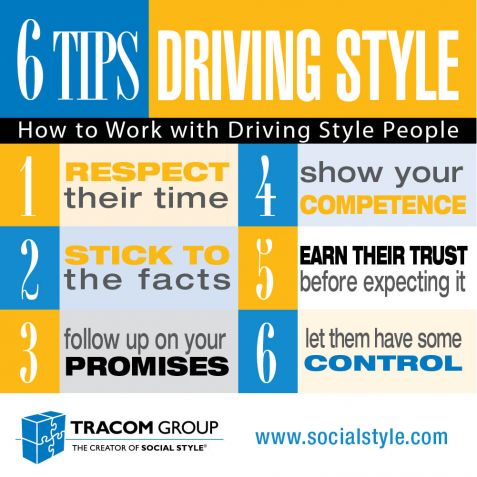SOCIAL STYLE®: Model Overview
SOCIAL STYLE is the world’s leading Behavioral Style model. It has been used by thousands of organizations to improve leadership performance and sales results. SOCIAL STYLE is powerful because it’s easy to understand and easy to apply with others. It makes your relationships more effective. Years of research into workplace success have shown that people are one of four SOCIAL STYLEs, each with their own preferred way of acting, thinking and making decisions. Understanding those preferences allows you to determine the best way to interact with anyone.Each Style represents itself through people’s daily interactions. At surface level, each Style is closely linked to whether an individual tends to assert himself or respond to others in social settings, and whether he tends to display emotion or secure control in group settings.
The Easiest Model to Learn & Apply:
Four unique Styles with observable cues.
Style is not good or bad, just different.
Actionable strategies to make others comfortable.
Versatility measures the ability to work effecively with others.
Assertiveness vs. Responsiveness
Some people prefer to take the lead in more assertive ways, speaking directly and frankly while focusing on the strategic objectives of their teams. Others prefer to respond to input from others, sharing their own ideas as a way to build upon others’. An individual’s tendency towards assertiveness of responsiveness shows itself in their communication style, conflict-management style, the job roles they are drawn to and the way they perceive themselves and their contributions in the workplace.Emoting vs. Controlling
Some people need to express themselves outwardly in social settings, while others prefer to maintain composure and control. The Expressive and Amiable styles display emotions openly and respond best to those who do the same. Their tendency to emote helps them to build relationships in all directions at work, but it can have mixed effects on team cohesiveness. The Driving and Analytical Style, on the other hand, tend to view displays of emotion as only being relevant in certain settings, not including the workplace. These two Styles care just as much about personal relationships and feelings their emoting counterparts, but they prefer to express themselves rationally at work.Versatility is the Power of SOCIAL STYLE
Because SOCIAL STYLE is based on observable behavior you can quickly identify a person’s preferences and make informed choices to make that person comfortable. This ability to moderate your behavior is what we call Versatility. The SOCIAL STYLE Assessment measures Versatility and its subcomponents so learners can understand their strengths and weaknesses when working with others. And SOCIAL STYLE training teaches specific techniques to improve Versatility with people of each Style. Learn more about Versatility here.
Easier to Learn and Apply than DiSC and MBTI
Once you learn the principles of Style and Versatility, it’s easy to use in any situation. Independent research studies have shown that people prefer SOCIAL STYLE to other interpersonal skills options such as Myers-Briggs or DiSC. With only four Style options, you can confidently predict a person’s preferences and see the results immediately.

















